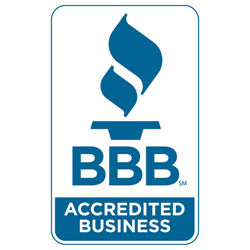

Two-thirds of American employers of all sizes successfully use self-funding for their health & welfare employee benefits.
Your Personal QuickStart Guide
to Self Funded Benefits.
Self-funding is a smart strategy offering a cost-effective way to fund an employee health plan. It can provide an opportunity for a small- to mid-sized employer to achieve immediate savings, compared to fully insured plans. The employer funds the claims up to a pre-determined amount – and if claims are lower than expected at the end of the contract period, the employer receives a refund.
With stop-loss insurance, employers are protected if claims become larger than projected, either for any one individual exceeding a certain dollar amount (specific stop loss) or when the total claims of the group exceed a set level (aggregate stop loss).
Some Frequently Asked Questions
Does self-funding lower the cost of health coverage?
Self-funding is normally less expensive. Research findings show a 40% savings of self-funding with a TPA versus a fully-insured health policy.
Do employers of all sizes take advantage of self-funding?
Today, 65% of U.S. employers use self-funding for their health plans according to many studies. In fact, the study showed that only 6% of U.S. employers have stuck with traditional fully-insured health plans. The remaining 29% use hybrid insurance plans such as minimum-premium and experience-rated.
What is the typical size of employers use self-funding?
While most people think only large employers use self-funding, the biggest growth for self-funding has been among the smallest employers. They are the ones who geenrally need the greatest cost efficiency.
Why does self-funding work so well for small employers?
The growth and maturity of the TPA and stop-loss insurance market has provided a very cost-effective (as much as 40% savings) way for even the smallest of companies to benefit from the advantages of self-funding. As a result, self-funding empowers employers of as few as 4 people to escape the expense of insurance company options. Multiple employer (such as sponsored by trade associations) and multi-employer (jointly sponsored with unions) plans have a decades-long successful record as the proven way to maximize cost-effective health coverage for small employers.
What other advantages does self-funding offer?
1. Self-funding allows an employer to control costs.
2. Self-funding is also consumer-friendly by letting each employer custom-design the plan coverage for his particular workforce and finances.
3. In recent years, most employee benefit laws and rules have technically been employer requirements... the responsibility of the employer not the insurance company or plan. Each year there are about 1,500 new laws, regulations, interpretations, opinions, and major court cases from about 100 different governmental entities which apply to employee benefits. Most have crippling penalties for even innocent failure to comply. Self-funded plans and TPAs have a unified interest with the employer to do the complex compliance.
Self Funding Benefits
QuickStart Guide

Learn the differences between self funded and traditional policies

Alternative Benefit Concepts
Who Is A Good Fit
Small businesses?
Large companies?
All of the above, but for different reasons.
The Affordable Care Act
What It Means For You

The issues of benefits planning and their effect on businesses.
© Alternative Benefit Concepts All rights reserved.
